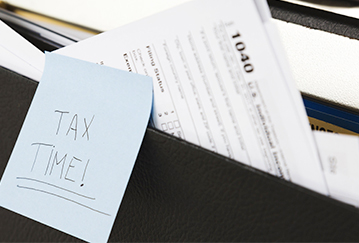TAX REGULARISATION REQUIREMENTS
The consequences for not filing your taxes increase as time passes.
For instance, delaying your filing past April 15th will automatically result in a fine of either $100 dollars or 5 percent per month of your taxes owed.
If you continue refusing to file, the IRS will charge you 100 percent of your taxes owed and will not allow you any deductions or credits.
This means that any perks for having dependents, giving to charity, or even paying interest on your mortgage are not considered.
Ignoring bills and notices from the IRS can lead to a determination of tax evasion.
Tax evasion is a serious offense that will leave you with a court hearing, marks on your credit, and criminal record.
Even worse, if found guilty of tax evasion, you will be fined up to $25,000 dollars and can serve up to 1 year in prison.
Additionally, you risk losing your refund if you don’t file your return.
If you are due a refund for withholding or estimated taxes, you must file your return to claim it within 3 years of the return due date.
The same rule applies to a right to claim tax credits such as the Earned Income Credit.
To regularize past tax returns, you must first collect your past income information.
Gather as much information as you can about your income for the years you need to file.
You’ll need your prior W-2s and 1099s for those years. If you are missing a W-2 and cannot obtain a copy from your employer, you can request a substitute from the IRS by filing an IRS Form 4852.
If you sold any capital assets in those years, such as stocks, you need to report this income as well.
However, if your goal is to stop penalties and interest from accruing, you can always estimate your income and make a tax payment before receiving a copy of your 1099 or W-2.
Next, make sure to obtain the correct forms and instructions for the specific tax years you have missed.
Your past-due returns must be filed on the original tax forms. You can easily access prior year tax forms by contacting the IRS.
Don’t make the mistake of using current year tax forms or you may end up preparing the return again.
Since the tax law changes from year to year, it’s important that you use the instructions applicable for the tax year you are filing a return for.
Aside from the confusion it will cause, using the wrong instructions may cause you to underpay or overpay the amount of tax you actually owe.
Finally, mail your tax return and all supporting documents to the address listed in the forms’ instructions.
For more information about IRS penalties :
https://www.irs.gov/businesses/small-businesses-self-employed/understanding-penalties-and-interest
In some cases, the IRS will waive the penalties for filing and paying late. The IRS will usually consider the following:
Reasonable Cause – You have a reason for not filing or paying on time, including:
-
- You exercised ordinary business care and prudence to determine your taxes;
- You had matters beyond your control that left you unable to file or to determine the amount of deposit or tax due;
- You didn’t receive necessary financial information;
- You didn’t know you needed to file a tax return even though you made efforts to find out;
- You had a death in your immediate family;
- You or a member of your immediate family suffered a serious illness that kept you from handling your financial matters; or
- You lost your tax documents in a fire or some other disaster.
First-Time Penalty Abatement – You may qualify for administrative relief from penalties for failing to file your tax return on time, pay your taxes on time, or to deposit taxes when due under the IRS’s First-Time Penalty Abatement policy if the following are true :
-
- You didn’t previously have to file a tax return or you have no penalties (except the estimated tax penalty) for the three tax years prior to the tax year in which you received a penalty ;
- You filed all currently required tax returns or filed a valid extension of time to file; and
- You have paid, or have arranged to pay, any tax due.





